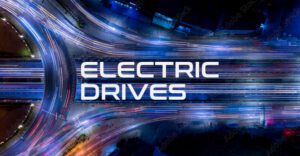Zap-Map, the UK’s leading electric vehicle (EV) charge point mapping service, has published new year-end figures for charge point installations in 2022. High growth in the number of ultra-rapid chargers across the country is the defining characteristic of the year. Other pieces of the jigsaw, from growth in the West Midlands to the accelerating provision of on-street chargers, are also worth highlighting.
The new charging growth figures come alongside record electric car sales in December in the UK. More than 42,000 battery electric cars were sold, overtaking petrol sales for the first time.
Satisfaction levels for EV drivers also remain high, with Zap-Map’s latest EV Charging Survey showing 89% satisfaction for pure-electric vehicles. This is higher than 71% for petrol and diesel.
As of the end of December, Zap-Map’s data shows that the number of ultra-rapid charge points grew by almost 80% in 2022. These high-speed devices, which cater to drivers travelling long journeys and looking to charge as quickly as possible, increased from 1,290 at the end of 2021 to 2,295.
This means that the country’s ultra-rapid charging rollout is more than keeping pace with the increase in the number of pure-electric cars on UK roads which grew by 40% since the end of 2021.

The growth in ultra-rapid charge points is largely due to networks such as MFG EV Power, Osprey and GRIDSERVE Electric Highway, which are rolling out high-speed charging ‘hubs’ of around six devices across the country.
In 2022 106 new high-speed charging hubs, of four or more rapid/ultra-rapid devices, opened across the country. This represented a 56% increase in the number of high-speed charging hubs open to EV drivers, with 189 locations at the end of 2021 and 295 as of December 2022.
Breaking this down further, at the end of 2021 there were 89 high-speed charging hubs with seven or more devices. This figure increased to 128 by the end of 2022, an increase of 44%.
These high-speed devices for en-route charging are only part of the puzzle. Other types of EV chargers deserve our attention too. In 2022, the total number of charging devices across the UK grew by more than 30% – from 28,458 to 37,261 by the end of the year. These 8,800-plus net new chargers also represent a new record; the highest number of UK charge points ever installed within a year.
While it’s good to be aware of the total number of EV chargers in the UK, Zap-Map co-founder and COO Melanie Shufflebotham notes that it’s important for the conversation to take on a little more nuance.
Melanie Shufflebotham, Zap-Map co-founder and COO, said: “Over the next few years, the UK will need a mix of charging solutions to suit a wide variety of use cases.
“Focusing solely on the number of charging devices masks the different types of charging available, what they’re useful for, and which ones are needed where.”

One of these key areas is the provision of on-street charging infrastructure. Found on residential streets, these devices tend to be either slow or fast chargers and, generally speaking, provide an alternative to charging at home.
This was a significant growth area in 2022, with the number of on-street charging devices increasing by 36%. These were up from 8,842 devices at the end of 2021 to 12,009 devices by the end of December.
London and the South East retain the top spots in terms of the highest number of charging points and 2022 saw thousands of chargers installed up and down the UK.
The area that saw the most significant rate of growth last year was the West Midlands. The total number of chargers in the region grew by 52% over the course of the year, increasing from 1,854 devices to 2,816.
Of these 2,816 chargers in the West Midlands, 223 were ultra-rapid devices, with 419 rapid, 1,789 fast, and 385 slow devices at the end of December. Wales also saw significant growth, with 1,039 devices operational at the end of 2021, and 1,473 by the end of December, an increase of 42%.
Despite this, Greater London saw the highest overall number of devices installed in 2022, increasing from 9,160 devices at the end of 2021 to 11559 at the end of December, an increase of 26%.

Shufflebotham added: “2022 was a record year for both EV sales and public charging rollout. With more than 8,800 net new chargers installed, a 30% increase, the UK’s network is keeping good pace with the take up of cleaner, greener cars.
“There are areas we need to see improvements. There’s still a London and South-East bias, especially for slow on-street charging, and reliability remains the top concern for EV drivers.
“The rollout of rapid and ultra-rapid chargers has been moving at pace and this needs to continue through 2023 because they are crucial for topping up en route.
“Despite the challenges of rising energy prices and supply chain shortages, it’s been another big year for electrifying transport. Hopefully, 2023 will beat the records again.”
For further information and EV charging statistics, visit www.zap-map.com/statistics.



